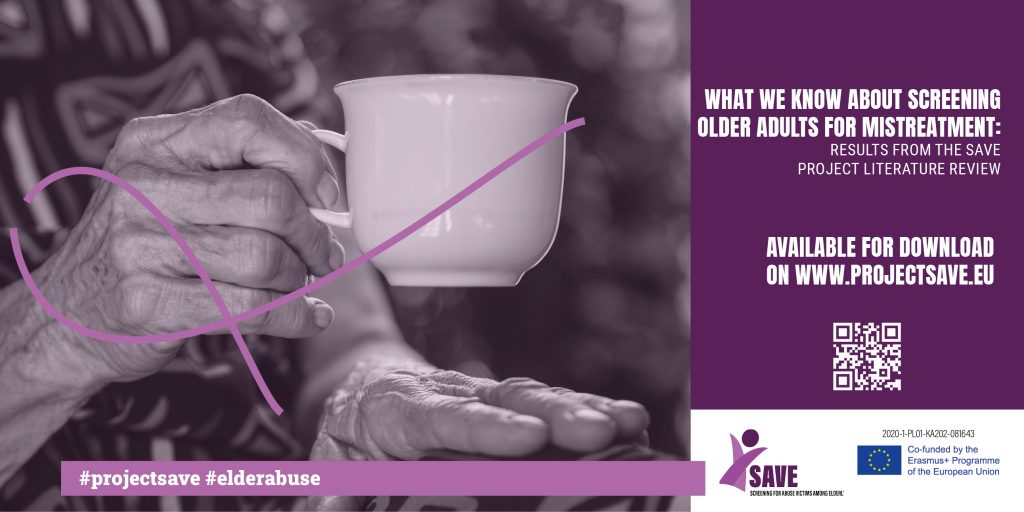Elder abuse is a widespread phenomenon worldwide. Using screening tools to identify cases of abuse could be a helpful strategy to support professionals in recognising the signals and indicators of mistreatment and ground the decision to request more comprehensive assessments. On the other hand, while there are different screening instruments in use, with different psychometric characteristics, we also know that there are arguments in favour or against the application of a screening processes and that there might be barriers to screening perceived by professionals as well as by older adults themselves.

In order to systematise the current knowledge on screening for elder abuse, the Erasmus+ SAVE project partnership, under the coordination of the University of Minho, has released a systematic review of the literature around this issue, which is now available for download in English. (Polish, Finnish, Greek, Portuguese and Italian versions will be available in January 2022).
The main outcomes of the research are that the literature on elder abuse screening points to several compelling arguments both in favour and against screening. though it is understood that screening is an important tool to raise suspicion on elder abuse, the lack of effective and practical tools and the unknown extent of potential negative consequences of screening are important factors to consider when thinking about the implementation of screening programmes.
More research is necessary to fill the above mentioned gaps and help professionals make informed decisions. It is worth noting that the use of screening tools beyond their possible positive effects on older adults is particularly useful in training social and healthcare professionals who deal with older adults more frequently. As such, training these professionals in good screening practices is essential to make screening feasible, raise awareness about elder abuse, and promote a broader view of the circumstances and factors around and within the older adult that can determine elder abuse.
To download the full research report and an abstract click on:

